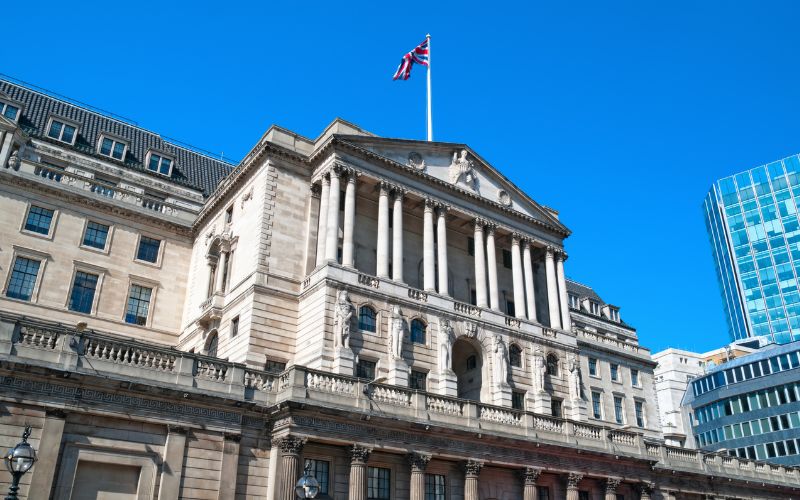Investing & Performance | 23 January 2024
Monthly Update: Markets START 2024 with optimism for the year ahead
Inflation continues to slide and the US’s central bank considers cutting interest rates.
WHAT’S HAPPENING IN FINANCIAL MARKETS?
With inflation finally coming down and major central banks putting interest rate rises on hold, the investment environment looks a lot brighter than it did at the beginning of 2023. While last year began with fears of a US recession and a slowdown in business activity, the global economy proved resilient and markets ended the year on a high.
One of the most notable factors behind the current positive mood has been the notable easing of core inflation, providing central banks and economies with some breathing room. After reaching a high of 9.1% in June 2022, US inflation has fallen by two-thirds. It’s been a similar story for the UK, with inflation falling to 3.9% in November – a fall that would’ve been hard to believe in early 2023.
Critically, interest rates finally appear to have peaked, with major central banks holding their benchmark rates towards the end of the year in response to falling inflation. While the Bank of England is on the same path, it’s refused to speculate when interest rates will come down. The pace of rate cuts in the UK is expected to be slower than in the US though, given that the UK’s inflationary environment is proving more difficult.
Stock and bond markets rallied in November following news that inflation had slowed. This end-of-year surge continued into December and was bolstered further after the US Federal Reserve (Fed) signalled it could start cutting rates in the first half of 2024.
Monique Wong, Head of Multi-Asset Portfolio Management at Coutts, says: “The year ended strongly for markets, spurred by November’s rally and the Fed’s decision to pivot in December.
“The notable aspect of the end-of-year surge was the shift away from the big tech stocks, which dominated much of the year, to a broader range of companies.”
WHAT DOES THIS MEAN FOR YOUR INVESTMENTS?
In response to the positive environment, Coutts have added high-yield bonds to portfolios, which are currently paying out high single-digit yields. They have also strengthened portfolio diversification by buying gold. With the Fed likely to start cutting interest rates this year, gold is poised to benefit and is already reaping some gains, while also bolstering our portfolio defence.
Coutts began 2023 with a cautious approach, but as they saw signs of improving economic data, they shifted their focus towards potential opportunities within riskier assets, especially where they feel the reward is greater.
Their choice at the end of the year to increase their investments in global stocks because of the strength of the US economy meant portfolios were well-placed to take advantage of November’s rally. Furthermore, their investment in longer-term bonds has gained from expected interest rate cuts, contributing to better overall performance.
Despite improvements to the global outlook, things are looking less positive for the UK economy, which could fall into recession in 2024. Coutts are underweight UK stocks compared to our benchmark. More broadly, they generally seek to reduce the risk of exposure to individual countries and regions by managing globally diversified portfolios and funds.
The value of investments can fall as well as rise and you may not get back what you put in. Past performance should not be taken as a guide to future performance. You should continue to hold cash for your short-term needs.
“The end of the battle with inflation is now in sight, and with that, the Fed is pencilling in rate cuts for the year ahead. This has raised hopes of a so-called soft landing, which is the sweet spot between steady inflation and a growing economy where recession is avoided.”
Monique Wong, Head of Multi-Asset Portfolio Management, Coutts
THIS MONTH’S SPOTLIGHT: US economy defies recession fears
It was widely predicted that the US economy would suffer a downturn in 2023, but the country defied recession fears and outperformed expectations.
The sharp increase in interest rates during 2022 was expected to push the country into recession in the first half of 2023. But its economy has remained surprisingly resilient, with recession predictions pushed back further and further, and growth persisting.
Conditions remain solid, with low unemployment and steady growth. Indeed, unemployment hit a half-century low in 2023 and job openings have consistently exceeded the number of unemployed, according to the US Labor Department.
These conditions have led to well-anchored consumers and robust spending on services. Manufacturing activity and housing demand have been higher than expected too, with real wage gains offsetting higher prices.
“Against all odds, the US economy has started 2024 in a remarkably better position than forecast,” explains Monique. “The end of the battle with inflation is now in sight, and with that, the Fed is pencilling in rate cuts for the year ahead. This has raised hopes of a so-called soft landing, which is the sweet spot between steady inflation and a growing economy where recession is avoided.”
More insights




